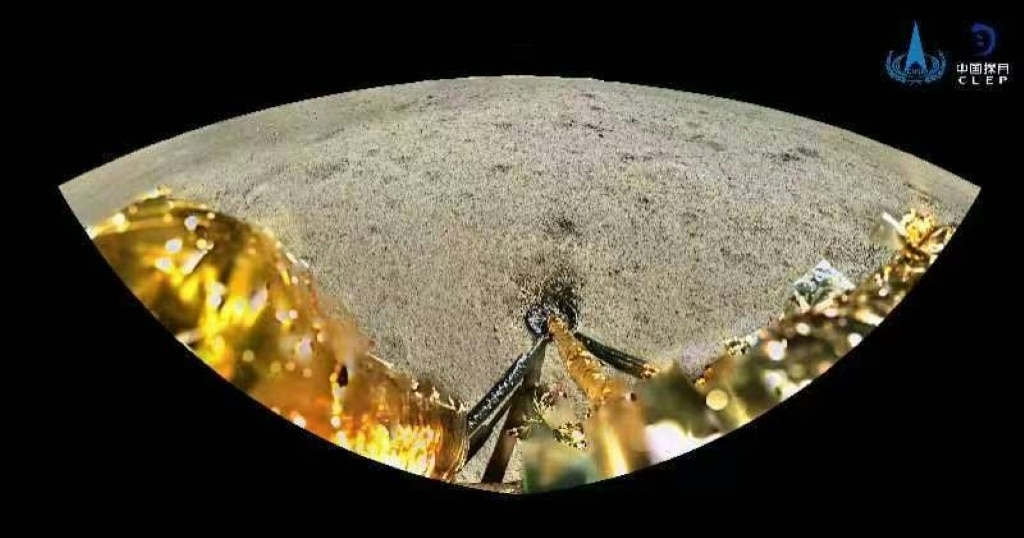China leaves mark on surface of the moon
The nation has left its mark on the far side of the moon after its historic mission was completed.
China’s historic mission to the far side of the moon has come to an end – but they’ve left behind a bit of patriotic graffiti.
The unmanned Chang'e-6 probe lifted off from the moon’s surface on Tuesday morning after collecting samples and unfurling a Chinese flag.
Footage of the probe leaving the celestial body went viral on local social media site Weibo, with people claiming a mark on the ground resembled the Chinese character “zhong”.
Zhong is the start of the Chinese-language word for the communist nation and can also mean middle.
“There is a Chinese character on the back of the moon,” broadcaster CCTV posted on Weibo.
“After collecting samples, the moon’s surface now shows a ‘Zhong’ character.”
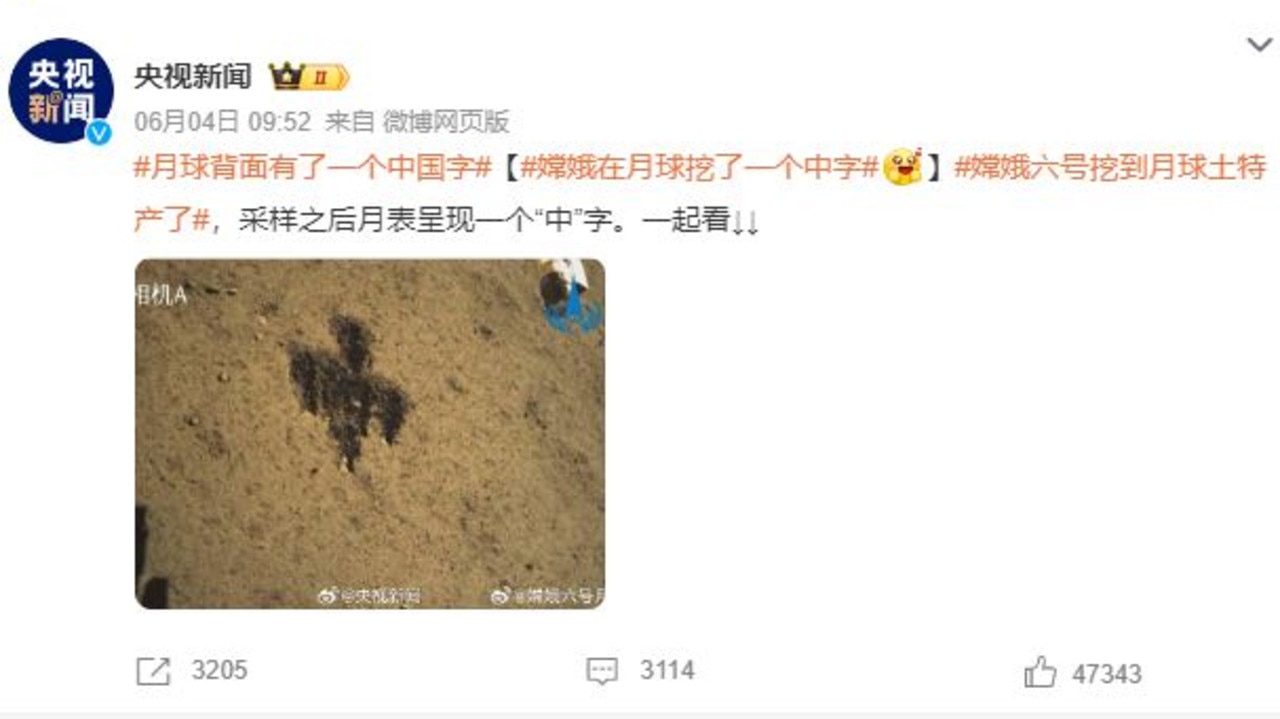
China became the first country to send a space mission to the far side of the moon – also known as the “dark side” – with its probe landing on June 2.
Its space agency said Chang'e-6 landed at the South Pole-Aitken basin just before 6:30am on Sunday, spending two days collecting samples using a drill and robotic arm.
State news agency Xinhua describing the probe’s relaunch back to Earth as “an unprecedented feat in human lunar exploration history”.
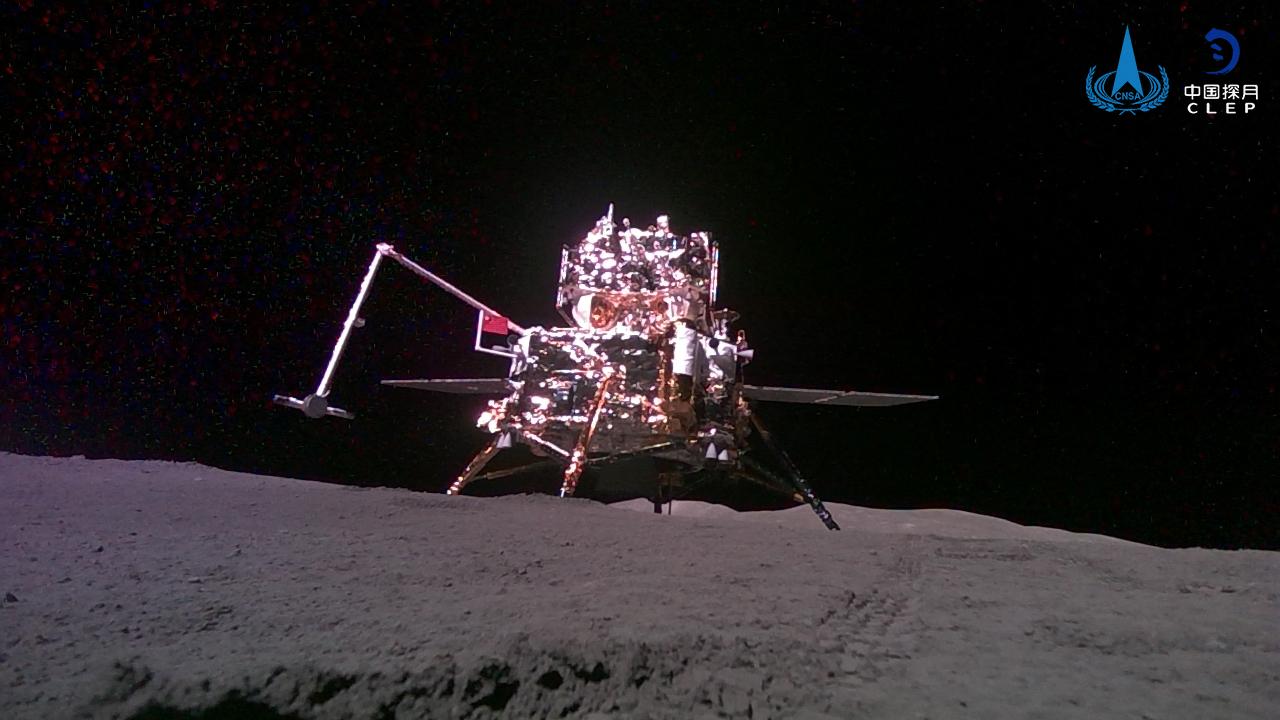
Analysis of the samples will allow scientists “to deepen research on the formation and evolutionary history of the moon”, Xinhua quoted mission spokesman Ge Ping as saying.
It will also offer insights into “the origin of the solar system … laying an improved foundation for later exploration missions”, he added.
The probe’s 53-day mission began on May 3.
Its landing site at the basin is one of the largest impact craters known to mankind, which could herald significant scientific discoveries.
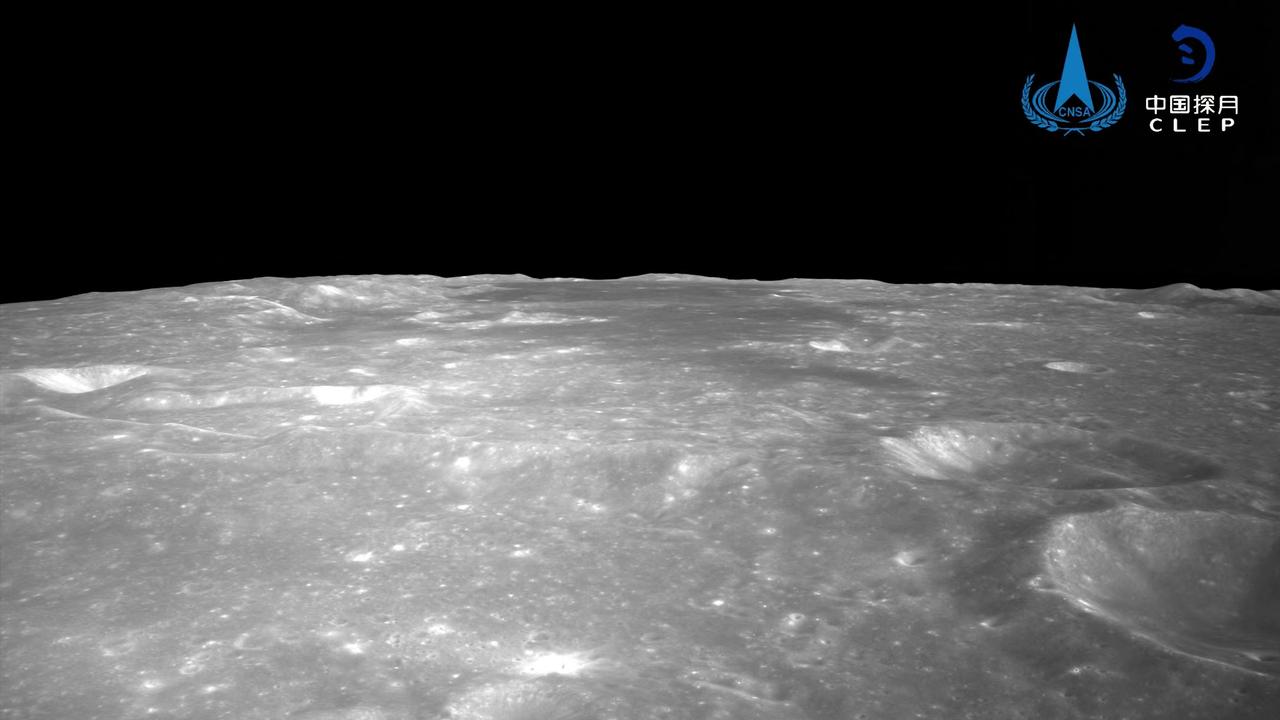
Scientists say the moon’s dark side – so-called because it is invisible from Earth, not because it never catches the sun’s rays – holds great promise for research because its craters are less covered by ancient lava flows than the near side.
Material collected from the far side may shed new light on how the moon formed.
A new space race
Plans for China’s “space dream” have been put into overdrive under President Xi Jinping.
Beijing has poured huge resources into its space program over the past decade, targeting a string of ambitious undertakings in an effort to close the gap with the two traditional space powers – the US and Russia.
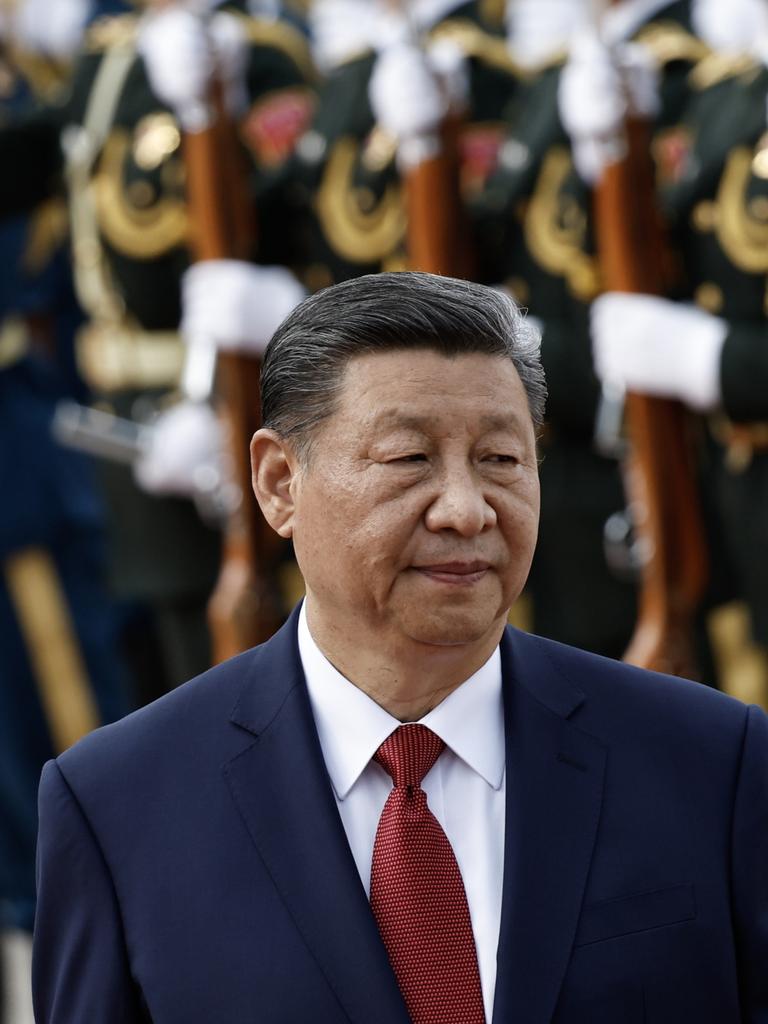
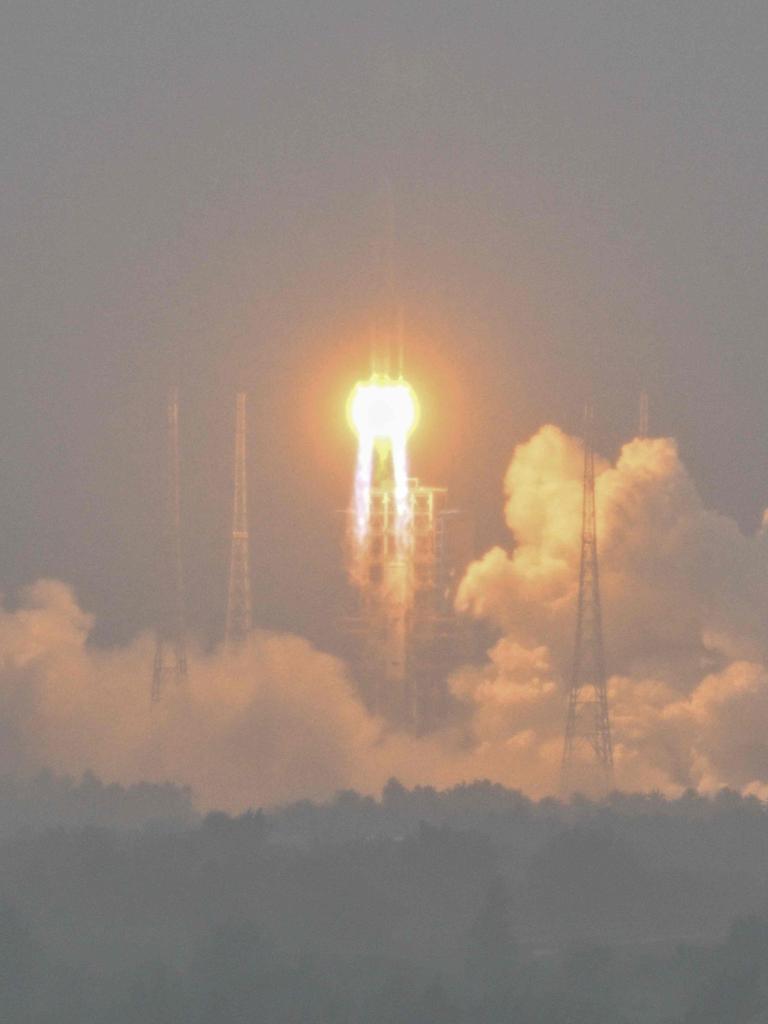
It has notched several notable achievements, including building a space station called Tiangong, or “heavenly palace”.
Beijing has landed robotic rovers on Mars and the Moon, and China is only the third country to independently put humans in orbit.
But Washington has warned that China’s space program is being used to mask military objectives and an effort to establish dominance in space.
More Coverage
China aims to send a crewed mission to the Moon by 2030 and plans to build a base on the lunar surface.
The US is also planning to put astronauts back on the Moon by 2026 with its Artemis 3 mission.
– with AFP

